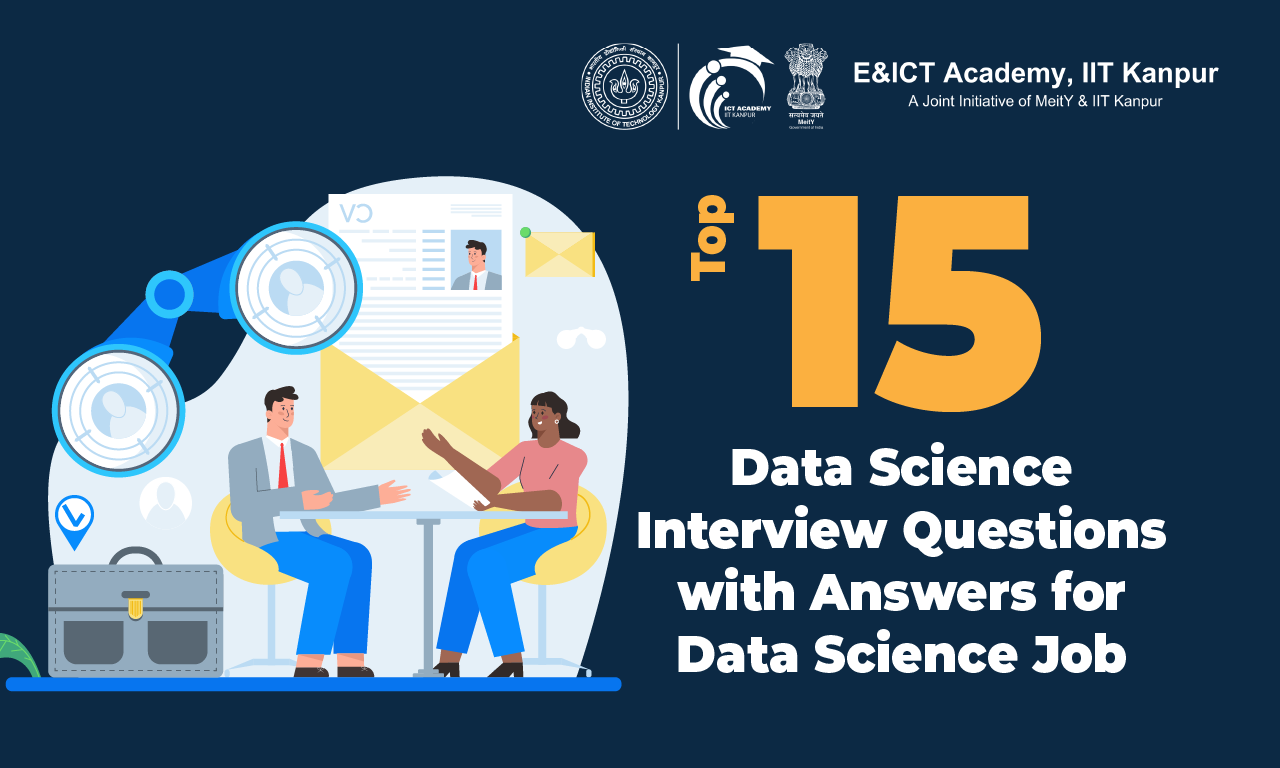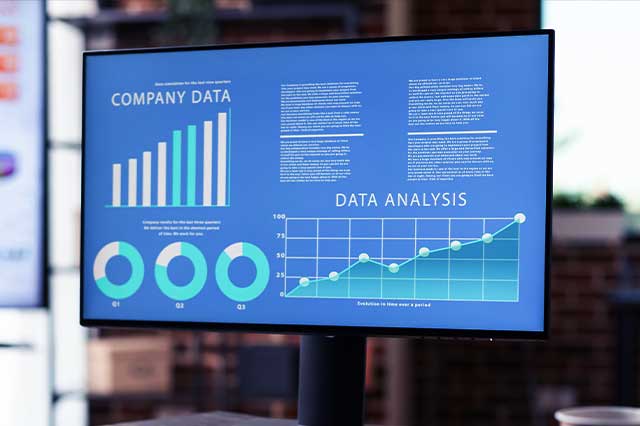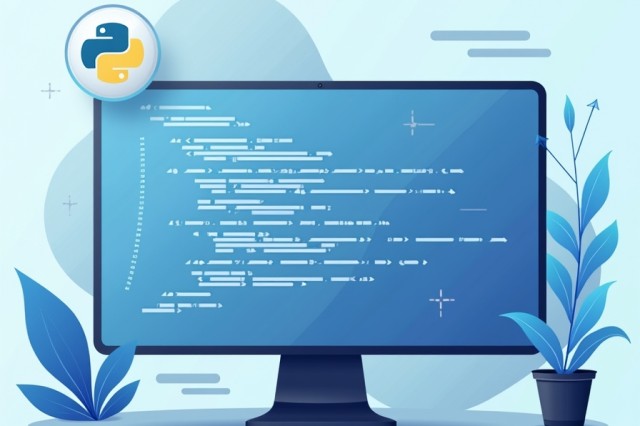Top 15 Data Science Interview Questions with Answers for Data Science Job

Data Science Interview Questions: Data science is one of the best career options in 2024 that comes up with lucrative salary packages, increasing demand for skilled professionals, and scopes for career growth. Almost every professional in IT professional dreams of switching job roles and getting their hands on data science concepts and skills for the most rewarding career path.
If you are on the same road, now is the perfect time to tackle those commonly asked data science interview questions and secure your desired position. For complete beginners, data science can be a complex field to grasp. The practices, tools, technologies, principles, and core concepts of data science can be perplexing at first. However, a beginner-friendly data science course can ease your learning journey and set you up for success with confidence.
Want to know what interviewers are asking candidates who dream of a data scientist job? Stay glued to uncover all the important data science interview questions for freshers and experienced professionals.
Master the Interview by Being Well-Prepared
You never know what will happen at the interview, but you can always be well-prepared and confident. Interviewers love knowledgeable candidates who know what they are saying and clearly understand the job or the areas in which they are seeking a job.
Hence, going through some commonly asked basic to advanced questions can help you stay ahead of the crowd and feel less nervous. You can choose to either review your data science syllabus, go through common interview questions, or do both to make the most of your preparation.
Also Read: Data Science Project Ideas in 2024
15 Questions and Answers to Prepare for a Remarkable Data Science Job Interview
Worried about your data science interview preparation and cannot find the right questions and answers to prepare? Here are some of the most important interview questions that can prepare you for almost all important data science topics.
1. What is data science?
You may never expect your interviewer to ask what is data science, but what if they do? Data Science is a multidisciplinary study dealing with mathematics, statistics, computer science, programming, advanced analytics, Artificial Intelligence, and Machine Learning.
This unified approach focuses on practices and principles, concepts, and methodologies of dealing with vast volumes of data, discovering patterns, and making predictions that aid in informed decision-making.
2. Can you explain what a decision tree is?
A decision tree is a useful flowchart-like tool used frequently to identify data patterns and make predictions. It aids the decision-making process, allowing professionals to make informed decisions based on the predictions or possible outcomes. One can say that it is an algorithm most useful in classifying data and improving decision-making.
3. Explain linear regression in your own words.
A statistical model or a supervised machine learning algorithm, linear regression, uses mathematical formulas to generate data-based predictions. Using predictive analysis, linear regression helps uncover the value of unknown data using other known or related data values.
4. What do you think is the difference between data science and data analytics?
Although they sound very similar, data science and analytics draw different stories. While data science is a multidisciplinary field that copes with large sets of data, statistical models, and AI and machine learning techniques, data analytics focuses more on the analysis of data and gaining valuable insights. You could say that data analytics is part of the data science syllabus but serves different roles.
5. Can you explain overfitting in machine learning and how it can be avoided?
Overfitting is a popular concept in data science that occurs when the deployed machine learning models perform efficiently on the trained data but fail to do the same on the unseen test data. It is a common issue, and hence, there are common solutions, such as training the model with more data or using effective techniques, including regularization and cross-validation.
6. What is underfitting in machine learning?
Underfitting is another common scenario in data science that can arise when deploying and testing machine learning models. It occurs when the trained model is unable to learn the data pattern and is equally inefficient in generalizing new data. An underfit machine learning model can also lead to unreliable predictions.
7. Can you explain logistic regression?
Understanding logistic regression is very important for data science interview preparation. It is a statistical data analysis technique that utilizes mathematical formulas to determine the relationship between two data factors and predict outcomes. The predicted outcomes are usually in the form of short answers, such as ‘yes’ and ‘no’.
8. How do you define pruning in a decision tree algorithm?
Pruning is a popular technique to remove unwanted nodes and branches from the decision tree. This technique focuses on improving the performance of the decision tree by eliminating sections that do not add to the accuracy. Pruning can also prevent a scenario of overfitting.
9. Can you define entropy in a decision tree algorithm?
Entropy is a method employed in decision trees to measure impurities and evaluate the homogeneity of datasets.
10. What steps would you follow to maintain a deployed model?
To maintain a deployed model, following these effective steps is a must:
- Training the model by using the latest data values
- Choosing new or additional features to prepare the retraining data
- Developing a new model if the existing model begins to offer inaccurate results
11. What is resampling in data science?
Resampling is a common technique in data science that is employed to draw samples repeatedly from the given data sets. This technique helps improve accuracy and avoid uncertain predictions.
12. Why is resampling done?
Resampling is usually done to improve the performance metrics and the accuracy of statistical data models.
13. What is a p-value?
A p-value is a statistical measurement that is used to validate hypothetical values against the data being observed. It is used in hypothesis testing to decide whether to reject or keep the null hypothesis.
14. Can you define root cause analysis?
RCA, or root cause analysis, is a data science technique that is used to determine and address problems by analyzing their root causes. RCA helps identify issues and implement the most effective solutions.
15. Can you define selection bias?
Selection bias occurs when the examples in a dataset are chosen in a way that is not representative of the real world. This, in turn, yields biased data, which makes it difficult to draw reliable conclusions.
| Related Data Science Articles | |
|---|---|
| Top Python Libraries for Data Science in 2024 | Data Science in Public Sector |
| Growing Demand for Data Science | Top 10 Data Science Tools |
Final Thoughts
With a prior understanding of predictable data science interview questions, you stand out among job-seekers with similar dreams. You can enter the room with confidence and even land the best job opportunities with solid preparation. If you want to know more about the data science syllabus or wish to explore the courses and certifications that can ease your pathway to becoming a data scientist, reach out to us today.
Recommended Courses

Advanced Excel & Data Visualization for Business Success

Advanced Excel with Data Visualization

Business Analytics

Data Analytics Essentials

Professional Certificate Course in Data Analytics and Generative AI

Python for Data Science



